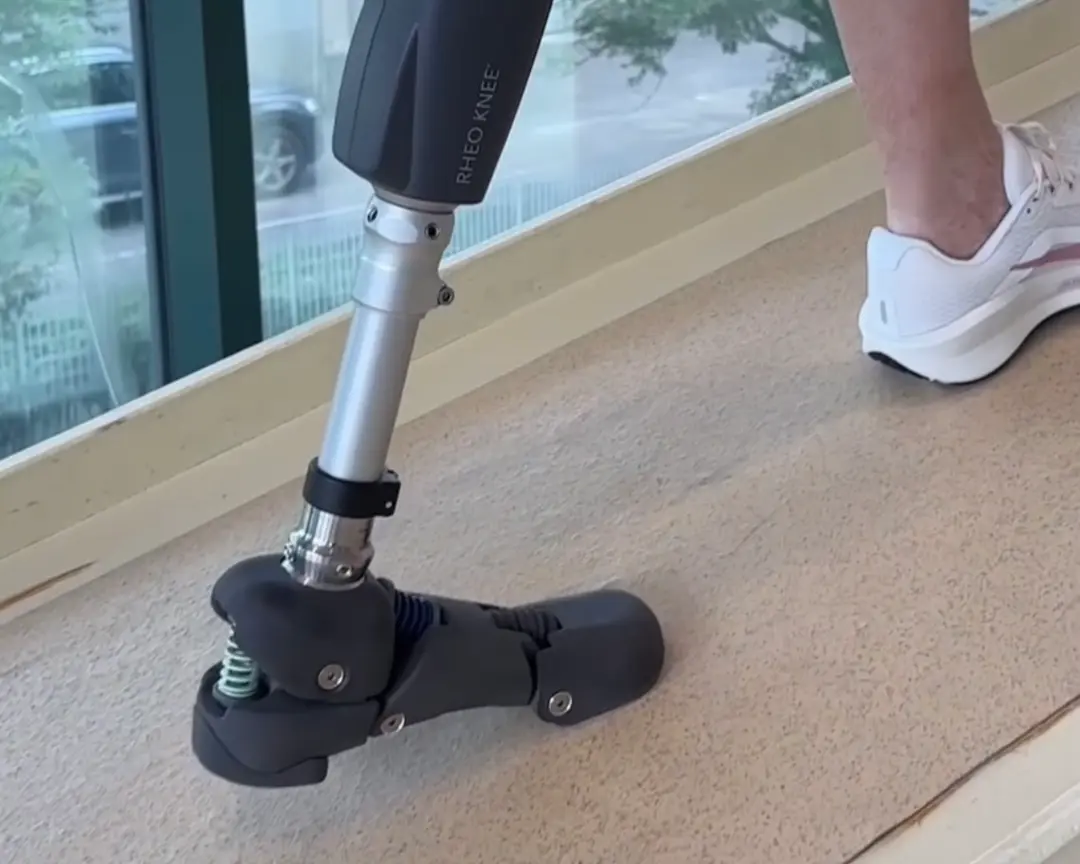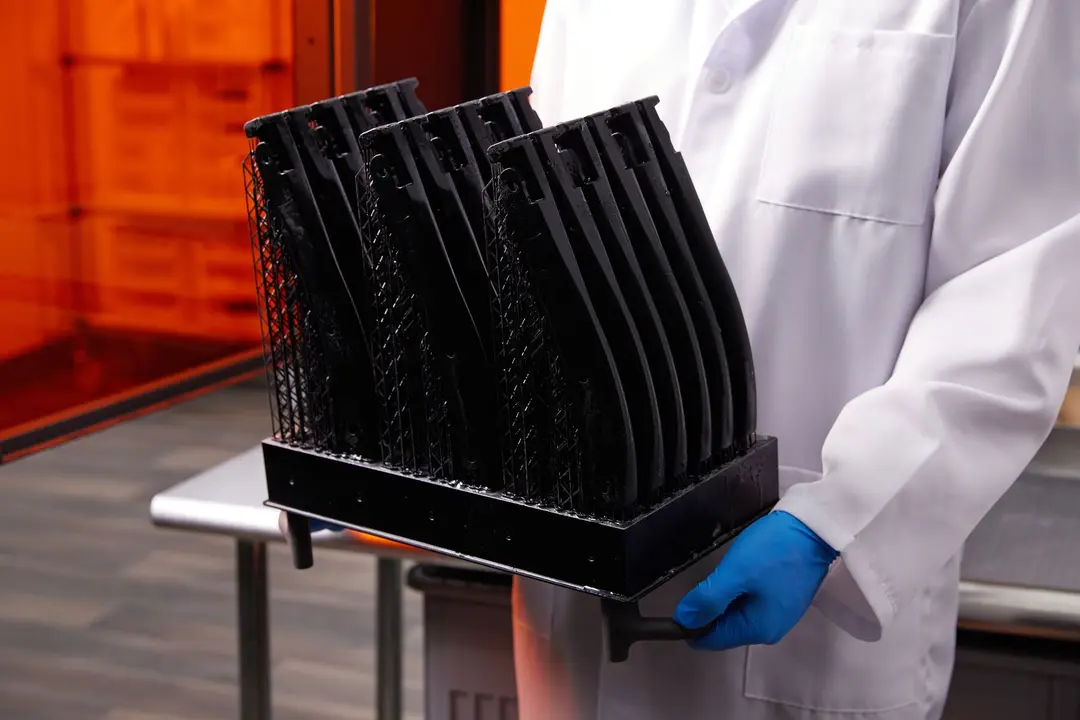How Academic Medical Centers and the 3D Printing Industry Teamed Up to Respond to COVID-19
In April 2020, Wirecutter, a New York Times subsidiary, published a story titled “Have a 3D Printer? You Can Use It to Make Face Shields for Medical Workers.” In the article, the author highlighted Michigan State University’s quick decision to repurpose its onsite 3D printers to respond to COVID-19-related shortages, writing:
“When a call went out to researchers at Michigan State University to search their labs for medical supplies such as face masks and donate them to medical workers battling COVID-19, assistant professor Nathan Tykocki and his colleagues started talking about how else they could help. They had 3D printers on hand. How could they put them to use?”
With masks and other supplies in short supply, the researchers used those 3D printers to swiftly create face shields for Michigan State University’s healthcare workers. And they weren’t alone in these quick-thinking efforts. Researchers at academic medical centers (AMCs) across the country, who typically use 3D printers for surgical applications and academic research, began using 3D printers to create personal protective equipment (PPE), nasal swabs for viral testing, and ventilator adaptors.
How were AMCs able to do this? Understanding the origins of this innovative and creative mentality requires a closer look at both AMCs and the 3D printing industry.
Academic Medical Centers & Innovation
An AMC is a hospital that is affiliated with a medical school. At AMCs, clinicians are not only focused on treating patients, but they are also tasked with educating medical students, conducting research on innovative therapies, and testing new technologies. Researchers conduct clinical trials, collect data, and support novel breakthroughs.
It should come as no surprise that, as news stories highlighting shortages swept the nation in March and April, AMCs began looking for novel solutions. Many researchers within AMCs already had access to 3D printers onsite to support surgical improvements (e.g., through patient-specific surgical tools) and research initiatives (e.g., 3D printed pharmaceuticals).
Some institutions even partnered with outside consultants, third-party companies, or other healthcare providers to share insights into the most appropriate ways to print certain items. This type of creative, collaborative mentality is also shared by the 3D printing industry, with companies like Formlabs becoming supportive partners in responding to the current healthcare crisis.
3D Printing & Innovation
The 3D printing industry has a rich history of sharing knowledge and pursuing creative solutions to challenging problems. Formlabs was founded on the ideals of creating and enabling innovation, as well as bringing powerful and accessible tools into the hands of professionals, such as those in the healthcare industry.
That’s why, when Formlabs’s medical customers began asking for support at the beginning of the COVID-19 pandemic, we developed a COVID-19 response network site, connecting those institutions who needed parts printed with others who had available printers.
Cases
Next, we’ll review some of the innovative ways in which AMCs have utilized 3D printing to support COVID-19 response efforts.
*Please note that manufacturers need to test, qualify, and validate every application. Formlabs has not tested and therefore does not recommend any specific application.
Duke University (Duke COVID-19 Engineering Response Team)
Photo courtesy of Duke University
The Duke University COVID-19 Engineering Response Team created an air-purifying respirator (PAPR) to protect healthcare workers from COVID-19 exposure. By early April, the new equipment was successfully used by healthcare workers in at least two surgical cases at Duke Health. To develop the PAPR, the team worked closely with Chip Bobbert, senior engineer and fabrication architect in Duke’s Innovation Co-Lab. Using Formlabs printers to create the respirators, they printed and tested numerous designs, iterating on the original design several times.
“Basically, it is the highest level of protection we can offer our providers, particularly those that are intubating patients,” said Eric Richardson, associate professor at Duke Biomedical Engineering.
University of South Florida
Photo courtesy of the University of South Florida
As part of a partnership with Formlabs, Northwell Health, and Tampa General Hospital, the University of South Florida created 3D printed nasal swabs for COVID-19 testing. In the course of one week, the teams at USF Health and Northwell Health worked together to develop a nasal swab prototype. USF Health faculty researchers in the departments of Radiology and Infectious Diseases worked with collaborators at Northwell Health to conduct validation testing. They conducted rapid clinical testing at Northwell Health and Tampa General Hospital. All testing showed that the 3D printed nasal swabs performed equally to standard swabs used for testing for COVID-19. They used Formlabs’ 3D printers and biocompatible resins to create the prototypes. “We are grateful that we were able to work as a team to get this solution out so quickly in order to hopefully help many people. The response has been overwhelming,” said Dr. Summer Decker, associate professor in the Department of Radiology in the USF Health Morsani College of Medicine and director of 3D clinical applications. “It’s been very rewarding to speak to so many hospitals across the world to hear their experiences and see how we can help. This situation has stripped away many of the barriers between us so we can work together for the common goal of saving lives.”
Northwell Health
Photo courtesy of Northwell Health
Using Formlabs printers, the Feinstein Institutes for Medical Research at Northwell Health created a 3D printed adaptor to convert BiPAP machines into ventilators for COVID-19 patients and nasal swabs for COVID-19 testing. Using a 3D printed T-piece adapter, A Northwell Health physician, a respiratory therapist, and a 3D printing bioengineer worked collaboratively to design a way to convert common bi-level positive airway pressure (BiPAP) machines into functional invasive mechanical ventilators. A BiPAP machine is a non-invasive machine that is commonly used to maintain a consistent breathing pattern at night in people with common conditions (e.g., sleep apnea, congestive heart failure or chronic obstructive pulmonary disease, a chronic inflammatory lung disease).
Todd Goldstein PhD, director of 3D design and innovation at Northwell Health praised 3D printers’ ability to quickly produce adapters.
Northwell Health on 3D printing
“We were able to imitate the design of the T-piece adapter and print the plastic-resin piece with our 3D printers. If the need arises, we would be able to print 150 adapters in 24-hours.”
Yale Medicine
Photo courtesy of Dr. Luiz Maracaja & Yale Medicine
Physician researchers at Yale Medicine made a face shield with airflow channels for healthcare workers. The face shield frame provides a continuous flow of compressed air or oxygen. The air circulation enables comfortable breathing within a full plastic hood, as well as defogs the shield film. This design offers healthcare workers better protection, as well as improved comfort. Dr. Luiz Maracaja, an anesthesiologist, worked with Yale physicians, Dr. Daina Blitz and Dr. Danielle L. V. Maracaja, and University of Mississippi physician Dr. Caroline Walker to design the face shield. It is called the “Oxyframe PPE.” They used Formlabs’ printers to create the face shields. "It’s a very simple concept. It’s basically a frame for a face shield and one of the sides is open, hollow, so you can connect compressed air or oxygen,” said Dr. Luiz Maracaja. Dr. Daina Blitz added, "These face masks can be used anywhere in the hospital that has even an air supply. It doesn’t have to be oxygen. Anything that can give you positive pressure, with some kind of air or oxygen device to blow the particles that are aerosolized away from your face.”
Johns Hopkins
Photo courtesy of Johns Hopkins University
At Johns Hopkins, a team of engineers developed and prototyped a 3D printed ventilator splitter that enables physicians to use a single ventilator to treat multiple, critically-ill patients. Many health systems have grappled with increased demand for ventilators during the COVID-19 crisis. Sung Hoon Kang, an assistant professor of mechanical engineering at the Johns Hopkins Whiting School of Engineering said, "There is an emphasis right now on using engineering to develop open-source solutions to many aspects of the COVID-19 crisis, but especially for ventilator design and production. One approach is to use one ventilator to treat multiple patients. While this is feasible, it must be safe for all the patients. That means ensuring that each patient gets the care they need, without shortchanging anyone. This is what we set out to create.”
Given the potential health risks associated with sharing a ventilator among patients, the researchers have designed an air-flow controller and flow meter, which would enable physicians to monitor air flow for individual patients attached to the ventilator. The team is also designing a filter to prevent cross-contamination between patients.
Conclusion
It’s clear that researchers, clinicians, and other innovators across the healthcare industry used creative solutions to respond to the unprecedented and ever-changing COVID-19 crisis. At academic medical centers, where there were existing fleets of 3D printers and a pre-existing culture of fostering technological innovation, using 3D printing as part of that process came naturally.
If your institution is looking to learn more about 3D printing, you can visit our Formlabs Medical website.


